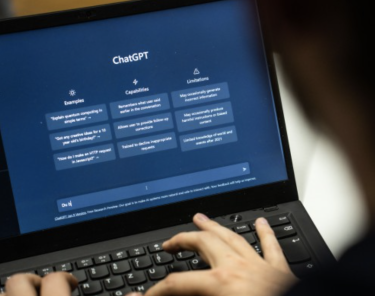AI Literacy in Teaching and Learning

AI Literacy in Teaching and Learning (ALTL) has been defined as “understanding the fundamentals of how AI works; critically evaluating the application of AI tools in teaching, scholarship, and the management of educational priorities; and maintaining vigilance in evaluating tools and techniques to protect against bias, misuse, and misapplication of these powerful models. ALTL also demands a commitment to ethical usage, ensuring that AI tools are applied transparently and responsibly, with an awareness of their societal impacts” (Kassorla, Georgieva, & Papini, 2024).
On this page, you’ll find an introduction to:
- What generative AI is
- How generative AI works
- Tips and resources for using generative AI in teaching and learning (if you choose to integrate it)
- Common biases and limitations of generative AI
- Tools and strategies for teaching AI literacy to your students

Generative AI is “any type of artificial intelligence (AI) that can be used to create new text, images, video, audio, code, or synthetic data” (Rouse, 2023). Although generative AI has existed since the 1960s, most of us only began to experience its impacts on teaching and learning firsthand in the past couple of years (White, 2023).
Note: This page focuses specifically on generative AI (gen AI). Interested in other types of AI and their role in teaching and learning? Check out this insightful article:

In generative AI, a statistical model is trained–that is, given the opportunity to search for and “learn” patterns–in a large data set. When prompted, it then generates (hence generative AI or gen AI) novel outputs based on what is probable given the patterns detected in the training data.
For example, imagine a generative AI statistical model is trained on all of the text messages you have ever sent. Would it find that the word “thank” is more likely to be followed by “you” (as in “thank you”) or “me” (as in “thank me”)? Let’s assume “thank” is more likely to be followed by “you.” Now, if you prompt it to compose a text message to let your friend know that you enjoyed coffee with them that morning, it will be more likely to include the phrase “thank you” than “thank me.”
Want to dig deeper into how generative AI works? Explore these expert resources:
- Caltech – Learn the fundamentals of how generative AI works from leading researchers.
- Wharton School's “Practical AI for Instructors and Students”– Watch this accessible explainer video designed for educators and learners.
- 3Blue1Brown YouTube Channel – Dive into more technical, visual explanations of how specific generative AI models operate.

If you are considering asking students to use gen AI tools to complete assignments or assessments, we encourage you to consider the following:
Check Departmental Policies First
Before getting started, check whether your department or program has policies regarding AI use in the classroom.
Start with Learning Outcomes
Reflect on the learning outcomes of the assignment or assessment. That is, what knowledge or skills is it designed to help students practice or acquire? Remember that the assignment or assessment learning outcomes should be aligned with your course learning outcomes. Then, consider the following questions:
- How will allowing students to use AI tools support them in achieving these learning outcomes?
- What specific uses of AI tools will support student learning?
- How might allowing students to use AI tools interfere with them achieving the learning outcomes?
- What specific uses of AI tools may interfere with student learning?
Explore Strategies and Sample Assignments
For guidance and inspiration, explore the following CTL resources for developing assignments or assessments that purposefully incorporate gen AI:
- The Teaching, Learning, & AI Resource Repository includes sample assignments that incorporate gen AI, as well as other resources for teaching and learning with and about gen AI.
- The AI & Assessment page provides tips and resources for designing assessments that meaningfully incorporate AI use to support student learning.
Select Tools with Equity, Accessibility, and Security in Mind
When selecting specific AI tools, consider access and equity, as well as accessibility and data security.
- Do all students have access to this AI tool? Is it free? If it is not free, how will you ensure all students are able to access this tool?
- Has this tool been vetted and approved through OIT’s Information and Communication Technology (ICT) review process to ensure it is accessible and secure? Learn more about the ICT review process, or submit a request for ICT review.
Determine the Level of AI Use
Now that you have selected an AI tool (or tools), determine what specific level of AI use you will allow on this assignment or assessment. We recommend using the AI Assessment Scale (Perkins et al., 2024) to explore different levels of AI use.
- Consider: If a student has ethical or other reservations about using gen AI, will they still be able to complete the assignment or assessment with success?
Be Transparent with Students
Make a plan for transparently communicating with students about the level of AI use that is allowed on this assignment or assessment, including how students are expected to cite AI-generated content or otherwise document their own AI use.
- CU’s Academic Instruction Guidance also strongly recommends that you:
- Include an AI syllabus statement that explicates the permissible uses of AI in your course (explore AI Syllabus Statement guidance from the BFA AI working group and CTL),
- Re-articulate your AI use policy for each assignment and assessment, and
- Engage students in constructive dialogues around AI use in your course.
Encourage Metacognition
Consider incorporating reflection, self-assessment, or other activities to encourage students to engage in metacognitive reflection around how AI use is supporting or interfering with their own learning.
- See this AI-assisted Learning Template developed by Mark Watkins as a model for how you might engage students in metacognition around their own AI use in your course (see the Reflection on Learning section, specifically).
If you are considering using gen AI to support your own work as an educator, explore this blog post for guidance on choosing an AI system (Mollick, 2025).

Generative AI has several significant limitations. Being aware of these limitations and ensuring that you educate your students on them is an essential component of AI Literacy. These limitations include, but are not limited to:
High Risk/High Reward
Although some AI tools show promise for supporting student learning, misapplication of AI tools can have a negative impact (Bastani et al., 2025; Zhang et al., 2025). Initial studies found that when students use gen AI for customized tutoring and resources tailored for their learning style, outcomes were comparable to traditional education. However, when students offloaded too many tasks to the gen AI, they had worse outcomes–even worse than not studying.
Hallucinations
GenAI can often “hallucinate,” inventing spurious facts and details. This can be especially dangerous to users trying to learn from the gen AI tool, given that they might not have the subject mastery to identify when facts are fabricated (Chelli et al., 2024; Mollick, 2023).
Misinformation
Gen AI tools can be used to create false information in any media format. For example, there is software, such as Hume or ElevenLabs, that can reliably clone voices and generate audio. There is also software, such as Veo and Synesthesia, that can generate photorealistic videos with only a text prompt (note that, although it’s currently limited to short clips or stationary angles, that could change soon). In addition, nearly every LLM (large language model) now has an image generation feature that can generate photorealistic images. Although these AI-powered media generators have safeguards, these safeguards are easy to circumvent. Thus, users acting in bad faith could potentially use gen AI to create media to fake events that never actually occurred.
Manipulation
LLM chatbots are built to effect a communication style and tone that is engaging and potentially flattering of the user (Mollick, 2025). Moreover, they are programmed such that they can state false information with a tone of confidence. This can make them particularly effective at swaying people’s views (Turner, 2025).
Bias
AI has various issues of bias. Its training data is disproportionately based on WEIRD (Western, Educated, Industrialized, Rich, and Democratic) sources, which creates corresponding cultural biases in its outputs (Bali, 2024). In addition, gen AI has been shown to reproduce non-inclusive language stereotypes along a variety of lines (Sun et al., 2023; Johnson et al., 2022; Abid et al., 2021, Whittaker et al., 2019). Finally, studies have shown that this bias is present covertly in many cases (Hofmann et al., 2024); therefore, any decision being made by gen AI should be scrutinized accordingly.
Data Privacy
Sam Altman, CEO of OpenAI, has made it clear that user logs are saved and that there is no confidentiality (Perez, 2025). All users should be cautious of what information they share with these chatbots.
Copyright Concerns
LLMs are trained on libraries of date that leave debts to contributors unacknowledged, which can constitute a form of plagiarism and theft of intellectual property (Reisner, 2025). While some cases have started setting precedents (Bartz v. Anthropic PBC, 2025), there are still many cases pending (BakerHostetler, 2025) in this rapidly evolving space.
Special thanks to Chris Ostro, Assistant Teaching Professor and Learning and AI Strategist with CE's Learning Design Group, for contributing this section and for providing input on this webpage.

As educators, we can provide students who wish to explore gen AI with guidance on how to use AI responsibly and ethically, as well as opportunities to practice essential AI literacy skills. This includes skills like fact-checking, verifying AI-generated outputs, and writing effective prompts. For examples of how educators can help students develop their AI literacy skill set, see this Times Higher Education (THE) article.
Other resources:
Cornell University Center for Teaching Innovation. (n.d.). Ethical AI for teaching and learning.
Notre Dame Learning. (n.d.). Teaching with technology: Teaching in the age of AI.
References
Kassorla, M., Georgieva, M., & Papini, A. (2024, Oct. 17). AI literacy in teaching and learning: A durable framework for higher education. Educause. https://www.educause.edu/content/2024/ai-literacy-in-teaching-and-learning/executive-summary
Rouse, M. (2024, Oct. 23). Generative AI. Techopedia. https://www.techopedia.com/definition/34633/generative-ai
Wharton School. (2023, August 23). Practical AI for instructors and students part 1: Introduction to AI for teachers and students [Video]. YouTube.
3Blue1Brown. (n.d.). Home [YouTube channel]. YouTube. Retrieved July 28, 2025, from https://www.youtube.com/c/3blue1brown.
Want to Stay Up-to-Date on the Center for Teaching & Learning’s AI Events & Resources?
Email Blair Young to be added to our Teaching & AI Listserver
If you prefer to self-enroll, login to Google Groups and search for Teaching & Learning with AI Community of Practice

